The high-quality optical rain gauge offers advanced, non-contact rainfall measurement using a high-precision infrared optical sensor. It utilizes a reliable filtering algorithm to eliminate interference from external light and fog. This precision rain gauge features a stable signal, high accuracy, compact size, lightweight design, and long service life.
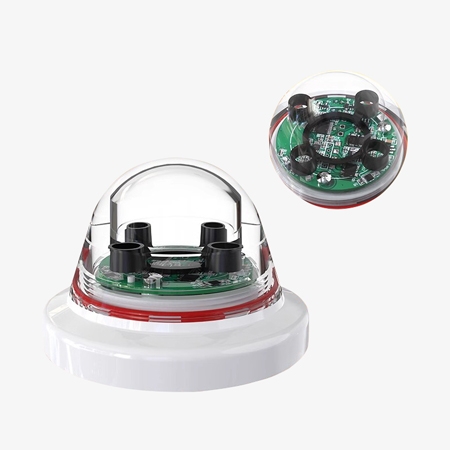
The Optical Rain Gauge Uses Infrared Light as the Measuring Medium, with High Measurement Accuracy
- Non-contact measurement, reducing errors: By using infrared beams to sense raindrops, no water collection or mechanical parts are required, avoiding errors caused by blockage, evaporation or inaccurate dumping devices.
- Fast response speed and strong real-time performance: The sensor is extremely sensitive to changes in raindrops and can achieve a second-level response, which is suitable for monitoring needs of sudden or intermittent rainfall.
- Applicable to a variety of climate environments: With a windproof, dustproof and corrosion-resistant shell structure which is suitable for long-term outdoor monitoring scenarios such as agriculture, meteorology, and hydrology.
- The optical rain gauge can access multiple data platforms: Support multiple communication protocols such as RS-485, convenient access to automatic weather stations, agricultural irrigation control systems or data collectors, and realize intelligent management.
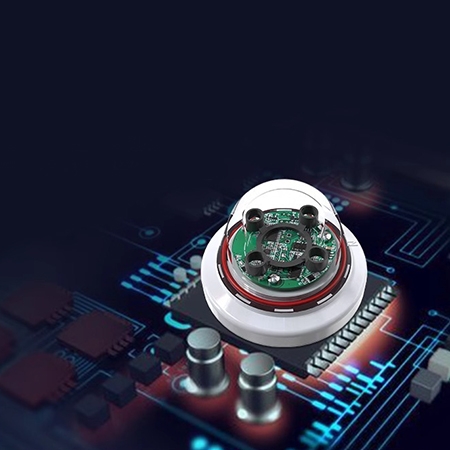
The Agricultural Rain Gauge has Four High-precision Optical Probes
- Accurately capture tiny raindrops: High-sensitivity optical probes can detect extremely small raindrops. By identifying beam interruption signals, high-resolution monitoring of trace rainfall can be achieved, which is particularly suitable for arid areas or light precipitation research.
- Improve rainfall measurement accuracy: The optical probe combined with advanced algorithms can accurately identify raindrop size and frequency, and has higher data accuracy and consistency than traditional mechanical sensors.
- Strong anti-interference ability: The probe uses narrow-band infrared light, which can effectively avoid interference factors such as dust, flying insects or light reflection, ensuring stable operation around the clock, suitable for complex outdoor environments.
- Fast response speed, real-time output: Real-time acquisition of signal changes of each drop of rainwater, fast probe feedback speed, can be used for monitoring systems or alarm linkage scenarios that require fast response.
Dimension
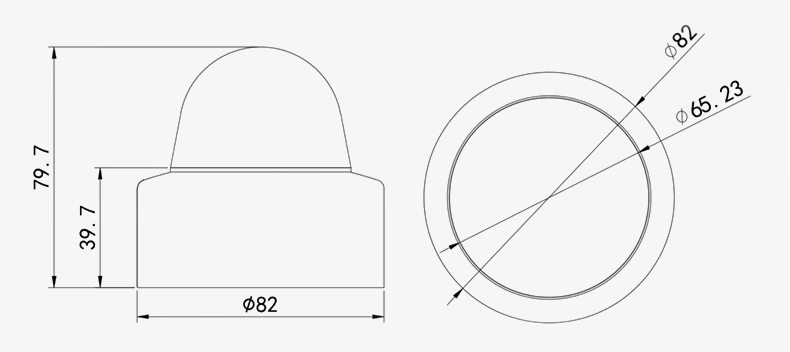
Applications
The SISCO rain gauges are widely used in hydropower stations, reservoirs, agriculture and forestry, meteorological stations, and hydrological stations to accurately measure rainfall for weather observation, irrigation planning, and water resource management.

Reservoir
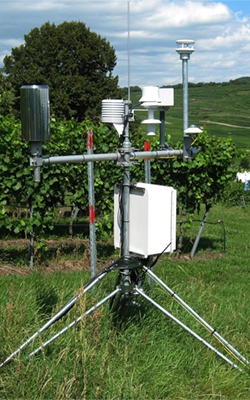
Weather Station
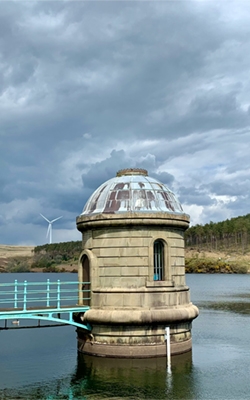
Hydrological Station

Agriculture and Forestry
| Model | SISCO-RG-SN-3001 |
| Rain Sensing Diameter | 6cm |
| Power Supply Voltage | 10-30V DC |
| Power Consumption | <0.24W(12V DC, current<20mA) |
| Resolution | Standard 0.1mm |
| Typical Accuracy | ±5% |
| Maximum Instantaneous Rainfall | 24mm/min |
| Output Mode | RS485 type/pulse type |
| Working Temperature | -40-60℃ |
| Working Humidity | 0-99%RH(no condensation) |
| Working Pressure Range | Standard atmospheric pressure±10% |
| Withstand Voltage (pulse type) | ≤30V DC |
| Withstand Current (pulse type) | ≤1A |
Q1: What is a rain gauge?
A1: A rain gauge is a meteorological instrument designed to accurately measure the amount of rainfall over a set period, usually recorded in millimeters or inches. It collects rainwater in a funnel or container, allowing for precise quantification of precipitation, which is vital for weather forecasting, agricultural planning, water resource management, and environmental research. There are several types of rain gauges, including manual gauges that require periodic reading, tipping bucket gauges that automatically record rainfall by counting bucket tips, weighing gauges that measure the weight of collected water, and advanced optical or radar-based gauges that estimate rainfall remotely.
Q2: Why a rain gauge is important?
A2: A rain gauge is important because it provides accurate and reliable measurements of rainfall, which are essential for weather forecasting, managing water resources, agriculture, and flood prevention. By tracking precipitation levels, rain gauges help farmers optimize irrigation, enable meteorologists to predict storms and droughts, support water authorities in managing reservoirs and flood control, and contribute to climate research and environmental monitoring. Without precise rainfall data, it would be much harder to make informed decisions that protect communities and sustain ecosystems.
Q3: Can a rain gauge be any size?
A3: A rain gauge can come in various sizes, but its dimensions must be carefully designed to ensure accurate and reliable measurements. Larger gauges can collect more rainwater and are often used in professional or research settings, while smaller, more portable gauges are convenient for personal or educational use. However, the size of the collection area affects the sensitivity and precision of the readings, so rain gauges are typically designed following standard dimensions to balance ease of use with measurement accuracy.
Tips: Advantages of an Optical Rain Gauge
- No Moving Parts:Unlike tipping bucket or mechanical gauges, optical rain gauges operate without moving components, reducing wear and the need for maintenance.
- High Accuracy and Sensitivity:They can detect very light rain, fine droplets, and sudden changes in intensity with great precision — ideal for real-time monitoring.
- Fast Response Time:Optical sensors provide near-instant rainfall readings, making them suitable for dynamic weather conditions and fast-changing environments.
- Reliable in Harsh Conditions:Designed with sealed, weatherproof enclosures (often IP65+), they perform well in dusty, humid, or remote outdoor environments.
- Low Maintenance:Since there’s no mechanical tipping or water collection, there’s less chance of clogging, overflow, or evaporation errors.
- Non-Contact Measurement:Raindrops are measured as they pass through a beam of light, reducing contamination and ensuring stable long-term data.
- Easy Integration: The optical rain gauges support digital output protocols such as RS-485, making them easy to connect with data loggers, weather stations, or agricultural systems.
Thank you for buying industrial test and measurement equipment on SISCO.com, all products sold by SISCO and the partner cover a 12 months warranty, effective from the date of receiving the products.
What is covered?
SISCO is responsible for providing free spare parts, and free technical support to assist the customer to repair the defective products until the problem is solved.
What is not covered?
- Product purchased from anyone other than a SISCO store or a SISCO authorized reseller.
- Expendable parts.
- Routine cleaning or normal cosmetic and mechanical wear.
- Damage from misuse, abuse or neglect.
- Damage from use of parts other than SISCO approved.
- Damage from use outside the product’s usage or storage parameters.
- Damage from use of parts not sold by SISCO.
- Damage from modification or incorporation into other products.
- Damage from repair or replacement of warranted parts by a service provider other than a SISCO authorized service provider.
- Damage caused by the application environment not meeting the product usage requirements and the failure to perform preventive maintenance.

